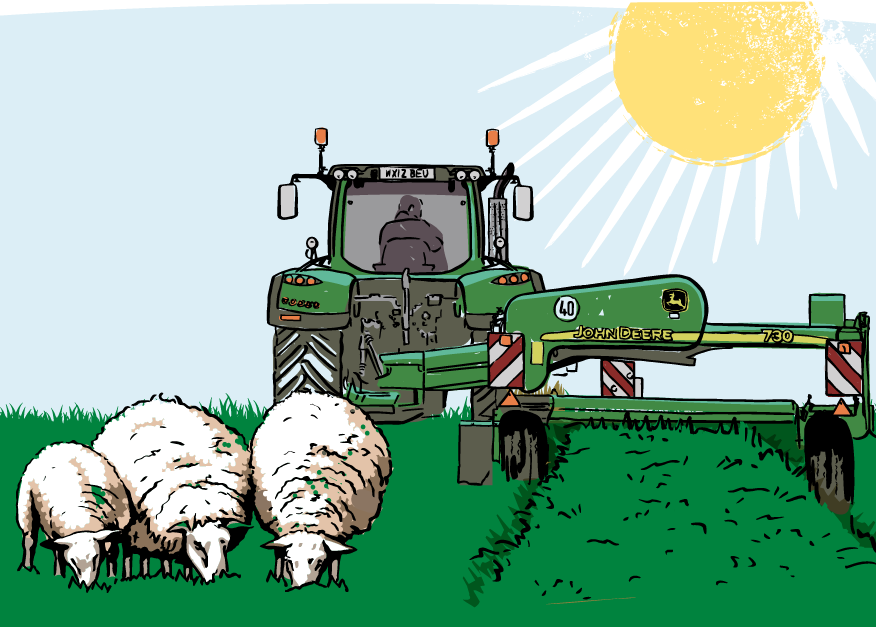

Suitable soils and optimum pH
These ryegrass-based leys grow on all but the most waterlogged soils. They are best suited to pH 6 or above but will grow down to pH 5.6.
When to sow
Seed can be sown between March and mid September when soils are warm and sufficient moisture is available. Mixtures containing clovers should only be sown when soils have consistently reached 7 degrees celsius or more in the spring and late autumn sowings should be avoided.
How to sow
A very firm seed bed is required as white clover and timothy seeds are small and benefit from shallow sowing at around 10mm (You should be able to ride a bicycle across the field before sowing!). Rolling twice after sowing is strongly recommended.
If under-sowing, do not choose a thick crop as this will result in failure; a thinly sown spring cereal is ideal, with a sowing rate dropped to 50kgs per acre (125kgs per ha). A clover seed mix is best sown by broadcasting with a spinner but can also be sown with a proper grass seed drill.
Management
As the main period of grass growth is during May and June, it makes sense to take a cut of silage or hay during this time. Additionally, where grass growth exceeds grazing demand more can be cut and round-baled as silage.
Ideally, these leys should be rotationally grazed with an interval of 3-5 weeks for recovery and regrowth.
Seed mixtures containing hybrid ryegrass should be relied upon for up to four years only.
Nutrient requirements
These leys should receive no more than 100kg N/ha with the biggest demand (60kg N/ha) in March and April if a silage cut is to be obtained. Pochon Dairy requires very little or no N as the high clover content (30-50%) will fix N in the soil.
Yield potential
12t DM/ha should be achieved, as a practical example Pochon Dairy can acieve 5-6 round bales (550kgs) per acre per cut.
Date Posted: 18th January 2018



